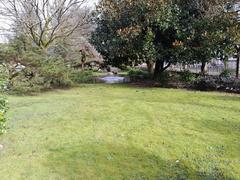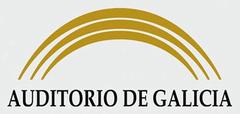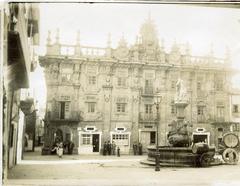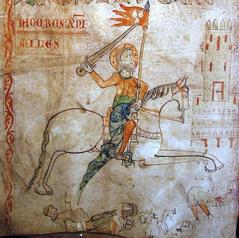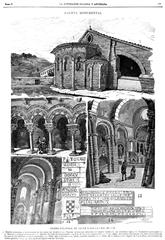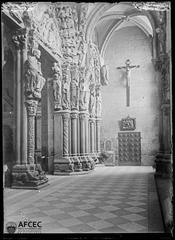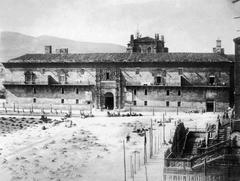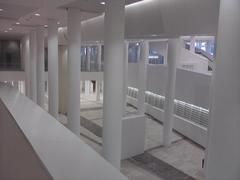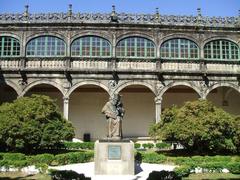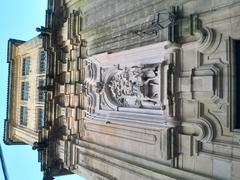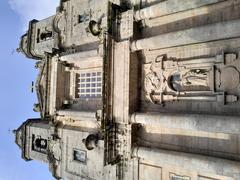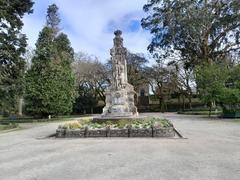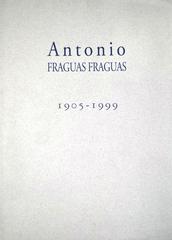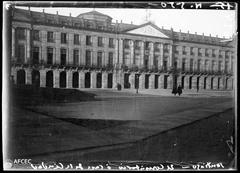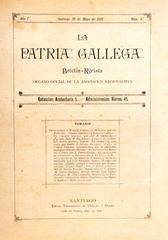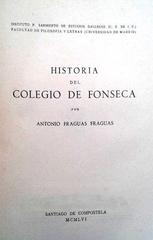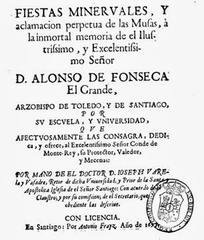
Capela de Ánimas: Visiting Hours, Tickets, and Santiago de Compostela Historical Sites Guide
Date: 04/07/2025
Introduction
Nestled in the heart of Santiago de Compostela, the Capela de Ánimas (Chapel of Souls) is an architectural and spiritual treasure that reflects Galicia’s deep religious traditions and artistic heritage. Built in the late 18th century, this neoclassical chapel is renowned for its unique stucco reliefs, vibrant history, and its welcoming atmosphere for pilgrims and visitors alike. This comprehensive guide provides detailed information on visiting hours, tickets, accessibility, nearby attractions, and practical tips to help you make the most of your experience at one of Santiago’s most distinctive historical sites.
Table of Contents
- Overview and Historical Context
- Architectural and Artistic Features
- Visitor Information
- Highlights and What to See
- How to Get There
- Nearby Attractions
- Travel Tips
- Frequently Asked Questions
- Conclusion
- References and Further Reading
Overview and Historical Context
Constructed between 1784 and 1788 under architect Miguel Ferro Caaveiro and master builder Juan López Freire, Capela de Ánimas was commissioned by the Cofradía General de Ánimas, a brotherhood dedicated to prayers for souls in purgatory. The chapel occupies a prominent spot on Rúa das Casas Reais, a historic route for pilgrims entering the city toward the Santiago Cathedral. Its foundation required the demolition of an entire block, signifying its importance in Santiago’s urban and spiritual landscape (queverencompostela.com).
The Capela de Ánimas remains a living center of devotion, especially during All Souls’ Day and the weekly Via Crucis ceremonies. Its proximity to the Cathedral and location within the UNESCO-listed Old Town make it a significant waypoint for both pilgrims finishing the Camino and travelers interested in history and art (Turismo de Galicia).
Architectural and Artistic Features
The Capela de Ánimas exemplifies late Baroque transitioning into neoclassical architecture. Its granite façade, adorned with Ionic columns and a prominent pediment, is decorated with a dramatic relief symbolizing souls in purgatory (Wikipedia). The interior is a single nave with lateral chapels, illuminated by a grand barrel vault.
Key highlights include:
- Polychrome stucco bas-reliefs by Manuel de Prado Mariño (1803–1814) depicting the Passion of Christ, including the Flagellation, Ecce Homo, Way to Calvary, Crucifixion, and Resurrection (Galician Wikipedia).
- Frescoes by Plácido Fernández Arosa, such as the Lavatory and Last Supper (I Love Compostela).
- Symbolic crypt, the burial place for prominent members of the Cofradía de Ánimas, enhancing the chapel’s spiritual depth.
The use of local granite and slate for construction ensures the building’s longevity and harmony with Santiago’s historic environment.
Visitor Information
Opening Hours
- Daily: 9:00 AM – 1:00 PM (Santiago Turismo; I Love Compostela)
- Religious Holidays and Special Events: Hours may vary; check updated schedules on official parish or tourism websites.
Admission and Tickets
- Admission: Free
- Tickets: Not required; donations are welcomed to support conservation (I Love Compostela).
Mass Schedule and Religious Services
- Masses: Usually at 9:00, 10:00, 11:00, and 12:00 daily (Horarios Misa).
- Confessions and Sacraments: Available, especially during major liturgical seasons.
- Special Events: Traditional Via Crucis every Sunday afternoon; All Souls’ Day vigil in November.
Accessibility
- Physical Access: Street-level entrance; wide aisles for mobility (Turismo de Galicia).
- Wheelchair Access: Main areas accessible; some historic zones may have uneven flooring.
- Assistance: Contact the chapel or tourism office for specific needs.
Guided Tours
- Availability: Occasional, especially during peak seasons or on request (I Love Compostela).
- Languages: Most signage in Spanish and Galician; English guides may be available for special tours.
Etiquette and Photography
- Behavior: Silence and respectful dress are expected, especially during Mass or private prayers.
- Photography: Allowed without flash; avoid disruptions during religious services.
Highlights and What to See
- Façade: Neoclassical, with Ionic columns and reliefs of souls.
- Interior reliefs: Vivid, polychrome stucco scenes narrating the Passion of Christ.
- Altarpiece and frescoes: Gilded woodwork, mural paintings, and devotional art.
- Crypt: Resting place of the brotherhood’s members (access may be limited).
- Permanent Exhibition: Part of a sacred art itinerary connecting local churches (I Love Compostela).
How to Get There
- Address: Rúa Casas Reais, s/n, 15704 Santiago de Compostela, A Coruña, Spain (Turismo de Galicia).
- On Foot: Centrally located, a 5-minute walk from the Cathedral and Praza do Obradoiro.
- Public Transport: Local buses and taxis available; main train and bus stations are 15–20 minutes away.
- By Car: Parking is limited in the Old Town; use public lots on the outskirts.
Nearby Attractions
- Santiago de Compostela Cathedral: The city’s iconic pilgrimage destination.
- Praza do Obradoiro: Historic main square.
- Monastery of San Martín Pinario: Imposing baroque monastery.
- Rúa do Franco: Bustling street for tapas and local cuisine.
- Museo do Pobo Galego: Museum of Galician culture.
Travel Tips
- Best Time: Mornings for a peaceful visit; avoid Sundays and major religious holidays for fewer crowds.
- Visit Duration: 30–45 minutes to enjoy art, architecture, and spiritual ambiance.
- Safety: The area is safe; watch personal belongings as in any tourist zone.
- Language: Basic knowledge of Spanish or Galician is helpful; English may be available in tourist materials.
Frequently Asked Questions
Q: What are the Capela de Ánimas visiting hours?
A: Daily 9:00–13:00; check for updates on special days.
Q: Is there an entrance fee?
A: No, admission is free; donations are welcomed.
Q: Can I attend Mass?
A: Yes, daily Masses are usually at 9:00, 10:00, 11:00, and 12:00.
Q: Are guided tours available?
A: Occasionally, especially during peak seasons; check with the tourism office.
Q: Is the chapel accessible for people with mobility issues?
A: Main areas are accessible; some historic sections may have uneven floors.
Q: Can I take photographs inside?
A: Yes, without flash; be respectful during services.
Conclusion
The Capela de Ánimas is a must-visit for anyone interested in the spiritual, artistic, and cultural life of Santiago de Compostela. Its neoclassical architecture, rare polychrome reliefs, and active role in local religious tradition make it a meaningful stop for pilgrims, art lovers, and history enthusiasts. With free admission, central location, and a welcoming environment, this chapel offers a window into the soul of Galicia.
Plan your visit, respect the sacred atmosphere, and take time to explore the surrounding historical sites to fully appreciate Santiago de Compostela’s rich heritage.
References and Further Reading
- Capela de Ánimas Santiago de Compostela: Visiting Hours, Tickets & Historical Guide
- Turismo de Galicia
- Santiago Turismo
- I Love Compostela
- Horarios Misa
- Packing Up the Pieces
- Wikipedia
- Galician Wikipedia
- Wanderlog




